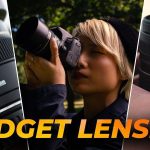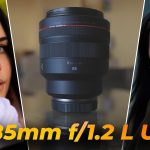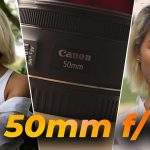Whether you own an APS-C or a full-frame camera, at some stage, you’ll be looking for a reliable 50mm lens because every photographer needs one in their bag. But what constitutes a suitable 50mm? Some photographers rave about the very features that others reject. That is the dilemma we face with the Canon EF 50mm f1.4 USM lens.
It has been around for many years now with roots that lie way back in the 1971 manual focus FD 50mm f/1.4, designed before digital cameras even existed. But has it stood the test of time? And is this lens one that you will love or hate? Let’s dive deep into the Canon EF 50mm f/1.4 USM and find out.

Prime Lens
For our purposes, one can say that lenses are divided into two categories, prime and variable. Prime lenses have a fixed focal length whereas variable lenses, as you would guess from the name, can zoom in and out.
Whilst zoom lenses offer you the convenience of zooming in and out without having to move, prime lenses have the advantage of providing sharper images.
The EF 50mm f/1.4 USM is a prime lens with a focal length of 50mm on a full-frame camera and a maximum aperture of f/1.4.
What does that mean?
Well, the focal length of a lens determines how much of the view before you will appear in the photograph. A wide-angle lens, such as the Canon EF-S 10-18mm f4.5-5.6 IS STM will give a considerable view whereas a mild telephoto lens of 70-105mm will bring the shot much closer.
While our human eyes can technically see a wide angle, we don’t tend to focus on what’s in our peripheral vision. A 50mm fixed focal length lens reproduces what your eyes are taking the most notice of in a scene. Because of this, 50mm lens are basically considered standard.
Bear in mind that a 50mm is only 50mm on a full-frame camera. If you have a cropped sensor, the focal length changes. You can look up the crop factor for your brand of camera, but on Canon it’s x1.6. This means that a 50mm lens on a Canon cropped sensor is the equivalent of 80mm.
This isn’t vital to know, as you won’t run into this too much, but it’s handy information.

Build Quality and Features
The EF 50mm f1.4 USM lens feels solid in your hand but not particularly heavy. It is a small lens measuring 2.9 x 2 inches (73.8mm x 50.5mm) and weighs in at 10.2 oz (290g) making it a very lightweight lens indeed.
That being said, you will still notice it on your camera.
Of course, it achieves this weight because it is made primarily of high-quality polycarbonate plastic, although it does have the all-electronic EF metal mount. Towards the rear of the barrel, we find a 6mm-wide moulded plastic grip which aids in lens changing.
The front glass is recessed into the lens, which means that you may not feel the need for a UV filter when you have this lens on your camera. That being said, I’d still recommend using one, as it protects the glass from impact. Better yet, I’d recommend getting a variable ND filter, as it will not only protect the more expensive glass, but it will also give you more options when shooting video.
Overall, the build quality is good. Its compact size makes it easy to carry around and comfortable to handle. The lens is not weather-sealed, so you need to consider that if you plan to shoot outside in all weathers. However, many photographers report that they have owned an EF 50mm f/1.4 USM for years, and their lenses are still going strong.
I’ve personally owned mine for around a year, I’ve used it in all sorts of conditions, and it’s chugging along just fine.
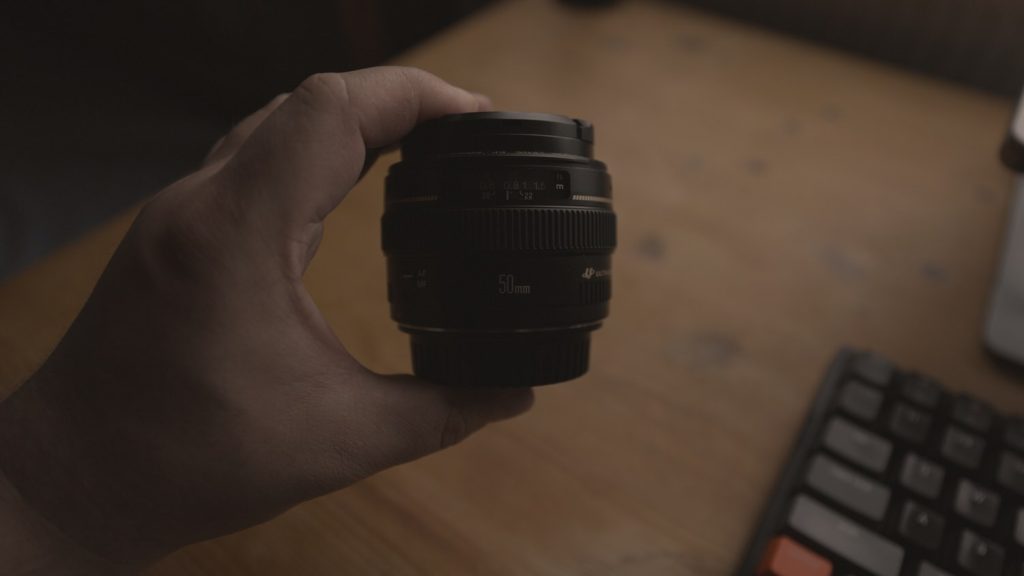
Maximum f/1.4 Aperture
The EF 50mm f1.4 USM has a generous aperture range, moving from a wide-open f/1.4 to a tiny f/22.
At f/1.4 the lens gives an extremely shallow depth of field, or bokeh. It can be hard to focus on a whole animal, for example, if you’re up-close. At this setting, a focus on your subject’s eyes will see the body and possibly even parts of the face become out of focus.
This is usually ideal for headshots and portraits. It’s all art, so it’s incredibly subjective, but a focus on the closest eye, with everything else slowly falling out of focus tends to be rather flattering.
Also, at f/1.4, this lens lets in a lot of light even when you’re shooting indoors. This can negate the need for a flash which is a positive in many photographers’ books.
It’s worth noting that this lens lets in 66% more light at f/1.4 than Canon’s 50mm f/1.8 lens. That can make a significant difference if your lighting options are limited.
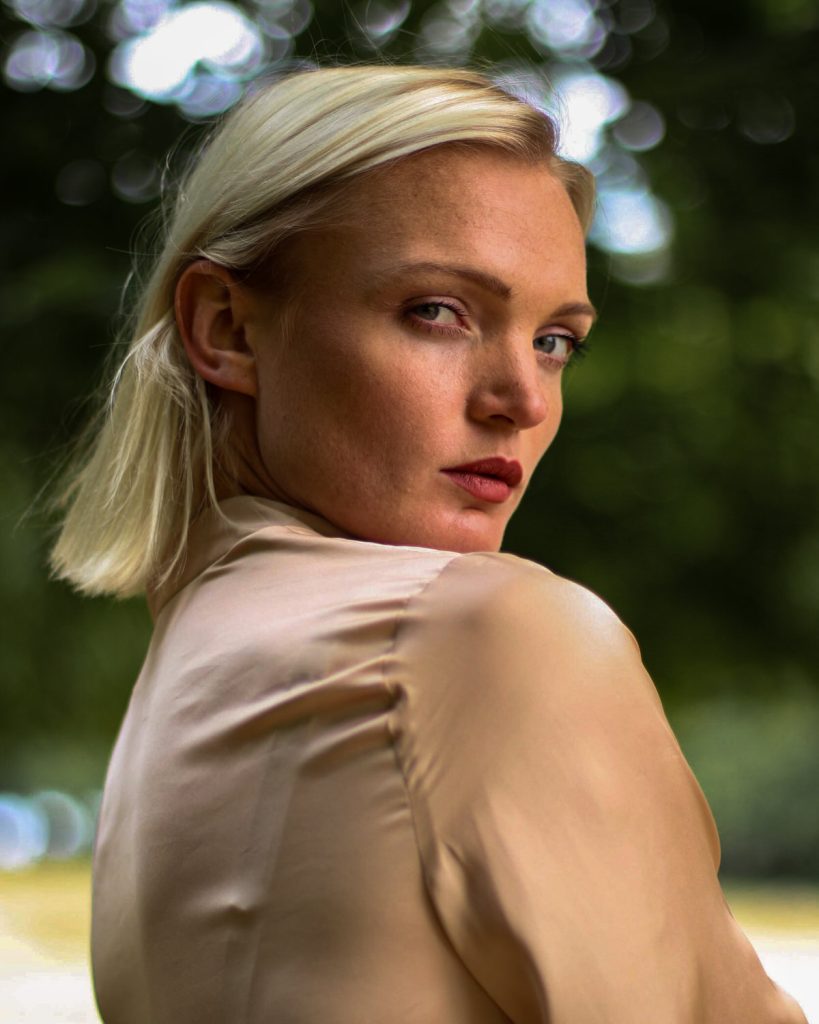
Image Quality
Over the years, there have been many tests performed on this lens.
The bokeh (that is, a sharp foreground and blurred background) can seem edgy and rough when the scene has a busy background or a lot of lights. Less complicated backgrounds merge beautifully into a soft blur.
There is little to no distortion or vignetting in your photos when using an APS-C camera at f/1.4, but some have expressed that you will see both on a full-frame camera at this aperture. That being said, the problem (if you see it as such) disappears by f/2.8.
I personally don’t worry about stuff like that, because my photos are intended for a larger audience, not necessarily photographers who will inspect every pixel of my photos. As far as I’m concerned, technical imperfections are irrelevant as long as the photo makes you feel something, or has that wow factor.
This is personally my favourite photography lens, and I use it all the time for all sorts of photos, from portraits to product photography.
Low-Light Photography
The f/1.4 and other wide apertures on the Canon EF 50mm f/1.4 USM are perfect for available-light shooting. It is an especially useful lens for low-light, indoor photography, especially when a flash is not permitted, such as in a church.
It can also produce beautiful low-light videos, creating stunning stormy sea sequences or dramatic city-lights views. Do bear in mind that when it comes to video, this lens is best used with a tripod, due to it not having any image stabilisation.
Additionally, the higher focal length will make camera shake more obvious. When shooting video, I actually use the Canon 18-55mm kit lens, as it not only has IS (image stabilisation), but it’s also wider, which makes camera shake less obvious.
Focus
The extra-small micro USM or Ultra Sonic Motor provides the power for autofocus on this lens.
When manually focusing, you have to turn the focus ring a very long way in your quest for that perfect focus too, as it turns a long path around 200 degrees. The good thing is that it allows for precise manual focusing, but in hand-held filmmaking, you have to keep turning and turning the ring, and that can become annoying over time.
That’s not really an issue as you can just rely on Canon’s magical Auto Focus.
Another slight problem occurs because the lens does not boast image stabilisation. That can result in camera shake, especially in video mode.
Known Problems
There are a few known problems in the EF 50mm f1.4 USM, and the general feeling among photographers is that it’s time Canon did an upgrade on this lens and fixed the flaws once and for all.
One common complaint is with the autofocus. It’s beautifully smooth and quiet when new, but after a year or more of use, it apparently often develops a noisy, scratchy sound. This is bad enough during still photography, but it also renders the lens too loud for video work. This is not something that I have personally experienced.
Another problem lies with the focus ring. When new, the ring is smooth and quiet, but over time it can become stiff.
The third complaint generally levelled at the EF 50mm f/1.4 USM is that it doesn’t perform well against bright light. It may be fantastic for low light work but shows low contrast levels and flaring when looking towards the light source. This last can be a common problem among lenses designed before digital cameras came out.
As far as I’m concerned, none of these are real issues for me personally, as I don’t use this lens for video, and I rely on Canon’s magical AF.

Full Frame or Cropped?
The EF 50mm f/1.4 USM can be mounted on full-frame cameras as well as cropped APS-C models. It can even be used on Canon mirrorless cameras when using an adaptor.
A 50mm lens is a useful all-round workhorse. Indeed, many photographers make it their go-to lens and keep it on their cameras most of the time. This is absolutely the case with me. My 50mm is always mounted on my Canon 77D, and it all fits snugly in my Lowepro ProTactic 450 AW II.
The angle of view is wide enough to get most scenes whether you’re talking about street scenes, buildings, displays or more. At the same time, it beautifully emphasises the subject in portrait shots too.
On an APS-C camera, the lens will be cropped, and you get a 35mm equivalent focal length of 80mm. This isn’t necessarily a problem although it has the effect of zooming in slightly on a landscape so you won’t see so much of the view. You may prefer to use this lens for portraits or closer work and shoot landscapes with a different lens on your cropped-frame camera.
Useful For
So, where does this lens excel?
One area is street photography. You will often find that with the 50mm focal length, the area in frame is just right. This lens makes it easy to compose balanced images. Your subject stands out, yet there is room to create interest beyond.
Another reason for the Canon EF 50mm f1.4 USM‘s success in street photography is that its size makes it seem unobtrusive on the camera. People can forget that you are photographing them and that often results in a beautiful, spontaneous-looking shot.
Similarly, this is well known as an excellent portrait lens, both for full-body shots and more close-up images.
As well as all that, the EF 50mm f/1.4 USM will also achieve satisfying action shots as well as wildlife and casual family shots. Sitting at a restaurant, you can snap a perfectly-formed head-and-shoulders portrait across the table, then take a few steps back and include the whole group.
On a different note, challenging yourself to step away from a zoom lens and use this 50mm fixed lens can open up a new set of photography skills, as it forces you to consider the composition of your images carefully.
The range of possibilities is a big reason why the EF 50mm f/1.4 USM is still, despite its faults, a popular camera lens, and absolutely my favourite for photography.
In The Box
As with most Canon lenses you get the bare minimum when you purchase this lens.
The box contains:
- One Canon EF 50mm f1.4 USM Autofocus Lens,
- an E-58U 58mm Snap-On Lens Cap,
- One Lens Dust Cap E (Rear)
- And a 1-Year Warrant.
There are some optional extras which can be purchased separately. They include:
- ES-71 lll lens hood
- LP1014 Soft case
- LHP-C10 Hard case
I absolutely recommend the lens hood, as it helps with glare and lens flare. Additionally, if you drop it, it’s better that the plastic hood gets damaged, than the glass lens. I guess it’s kind of like a bicycle helmet for your glass.
Price
The pros and cons around the Canon EF 50mm f/1.4 USM should be considered in light of its price.
It has been designed as a mid-level option amongst Canon’s three 50mm lens offerings, the others being the budget Canon EF 50mm f1.8 II and the newer, more expensive Canon EF 50mm f1.2L USM.
You can click the links above to see how much they cost in your area.
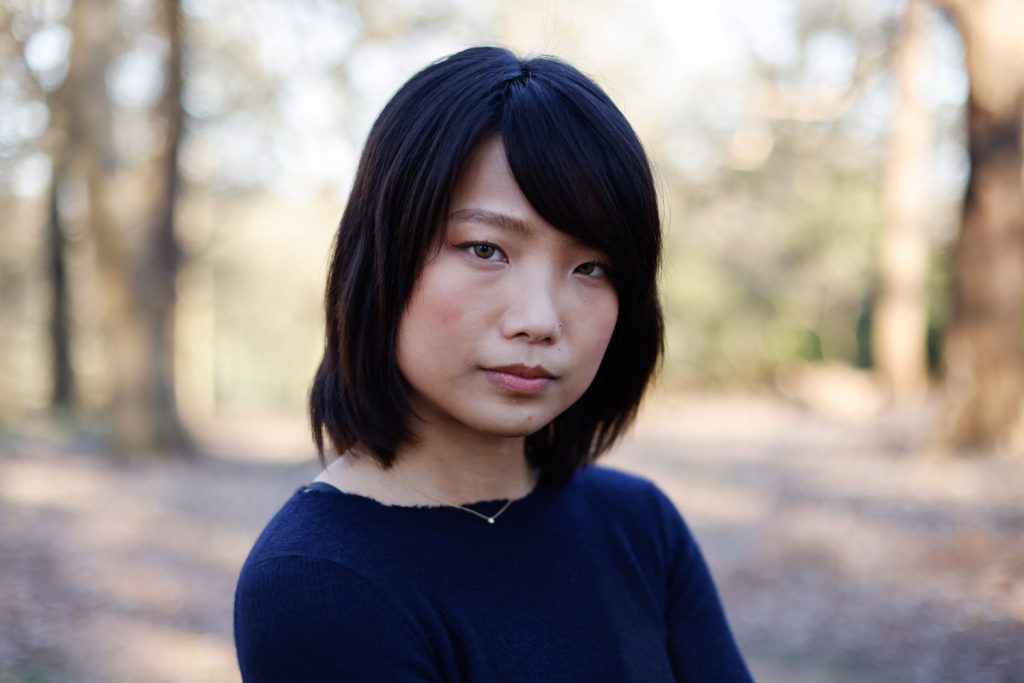
Conclusion
So, has the Canon EF 50mm f1.4 USM stood up to the test of time and is it a lens worth buying today?
The lens is lightweight with low distortion and a fast focus system. It is versatile, allowing the photographer many options when it comes to capturing perfect pictures.
Despite its age and issues, this is still the one that many photographers keep as their primary lens. So, even though it could do with an overhaul to modernise and fix the AF faults, the Canon EF 50mm f/1.4 USM lens remains the workhorse of choice for many photographers out there.
If you’ve been practicing photography for a while with your kit lens that came with the camera, I’d absolutely recommend getting this as your second lens.
Thank you for reading my review of the Canon EF 50mm f1.4 USM. I invite you to have a look at some of my other articles. We have something for everyone, whether you’re interested in audio, or cameras and lenses. Alternatively, if you prefer video reviews, feel free to have a look at my YouTube channel.
